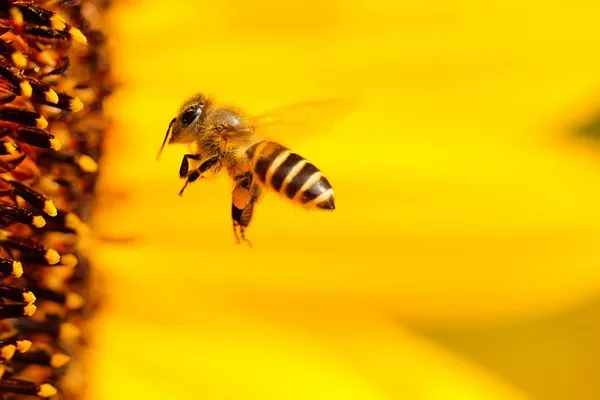Michigan State University researchers have found that certain annual flower varieties can attract pollinators, challenging the notion that these popular garden plants are pollinator “deserts.”
While wildflowers and perennials are essential for supporting pollinators, annual flowers are often chosen for their vibrant appeal. A two-year study by Michigan State University researchers indicates that selecting the right varieties of annuals can also benefit bees and other pollinating insects in home gardens.
The study, published in the Journal of Economic Entomology, observed 25 cultivars of the six most popular annual flower species in the United States. Researchers discovered significant differences in pollinator attractiveness among these cultivars. Notably, the begonia cultivars “Cocktail Brandy” and “Ambassador Rose Blush,” and the impatiens cultivar “Accent Coral” attracted the most pollinators.
“For homeowners and garden center customers, this means they can choose certain cultivars of their favorite flowers that support pollinators,” said David Smitley, Ph.D., lead author and professor emeritus in MSU’s Department of Entomology.
Popular Annuals and Pollinator Attraction
In the U.S., annual flowers constitute more than half of all flowering plants sold annually, with sales reaching nearly $2 billion in 2020. The top six annuals—petunias, geraniums, pansies, begonias, impatiens, and New Guinea impatiens—account for nearly $900 million of these sales.
Smitley and his team selected three to five cultivars of each of these six annual flower species for their study. They grew six groups of these annuals (150 plants in total) in mixed plots at MSU in the summers of 2017 and 2018, alongside known pollinator-friendly benchmark flowers. From early June to late August, researchers regularly recorded pollinator visits to the flowers.
With assistance from bee taxonomist Jason Gibbs, Ph.D., and statistician Jared Studyvin, Ph.D., the team identified and analyzed the insects visiting the flowers, comparing results across species and cultivars.
Significant Findings
The study found considerable variation in pollinator visitation among cultivars of the same flower species. While overall visits to annual flowers were lower compared to benchmark flowers, some annual cultivars still demonstrated modest attractiveness to pollinators.
For example, the begonia cultivars “Cocktail Brandy” and “Ambassador Rose Blush” attracted pollinators at more than three times the rate of the least attractive begonia cultivar. The impatiens cultivar “Accent Coral” also showed high attractiveness. This variation was evident across all tested species.
“This research suggests plant breeders could develop and market pollinator-friendly cultivars of popular flowers,” said Smitley.
Supporting Pollinators with Annuals
Pollinating insects observed in the study included honey bees, bumble bees, sweat bees, wasps, and syrphid flies, whose larvae benefit gardens by consuming pests. Butterflies were excluded due to insufficient visits but could be included in future studies.
While only 25 cultivars among six species were evaluated, the findings indicate that more annuals could support pollinators. Gardeners can also contribute by observing which flower varieties attract bees and other insects in their own gardens.
“Gardeners can purchase a mix of cultivars and note which ones are visited by bees, helping to identify pollinator-friendly options for future planting,” said Smitley.
This study highlights that, although wildflowers and native perennials remain crucial, certain annual flowers can also play a role in supporting pollinators.


